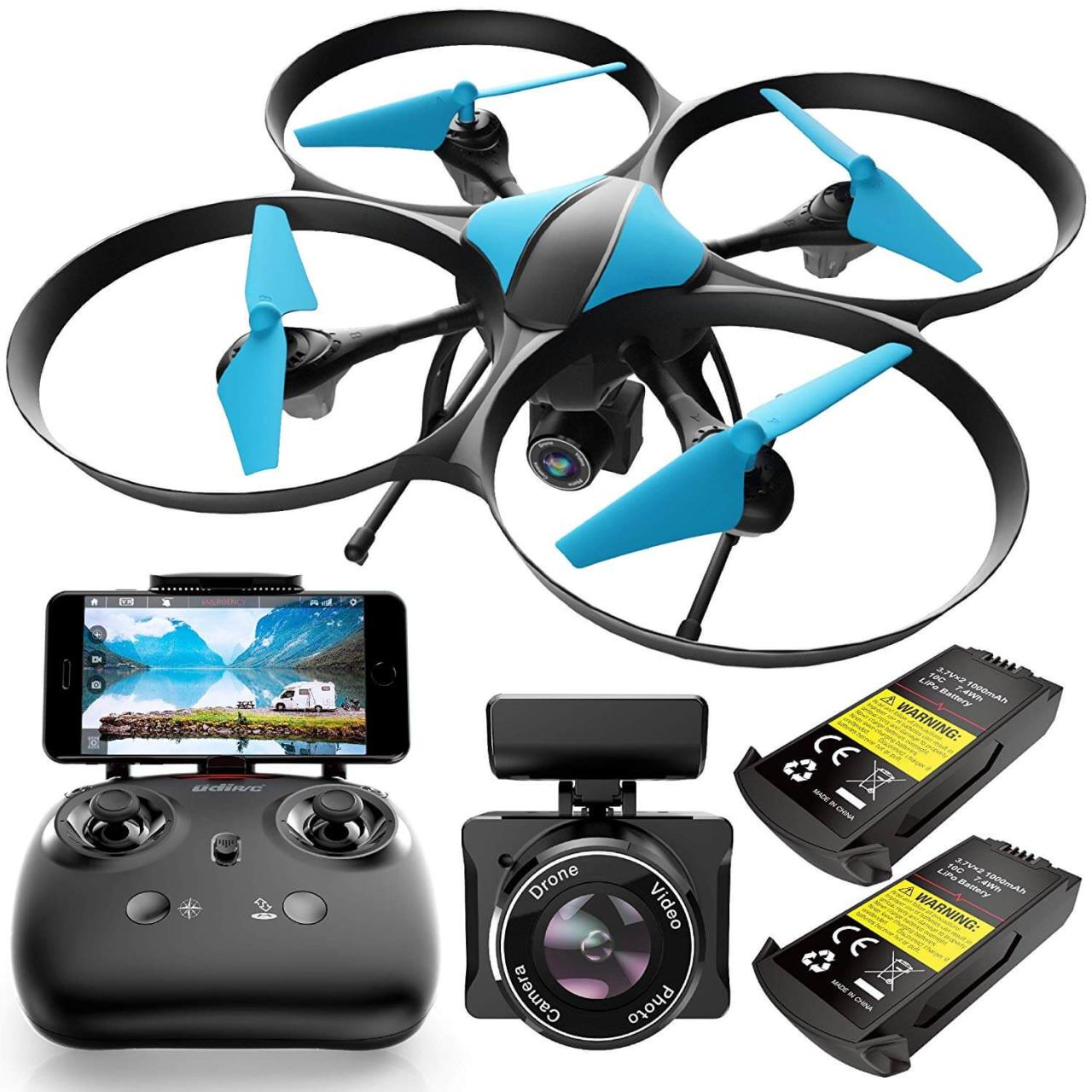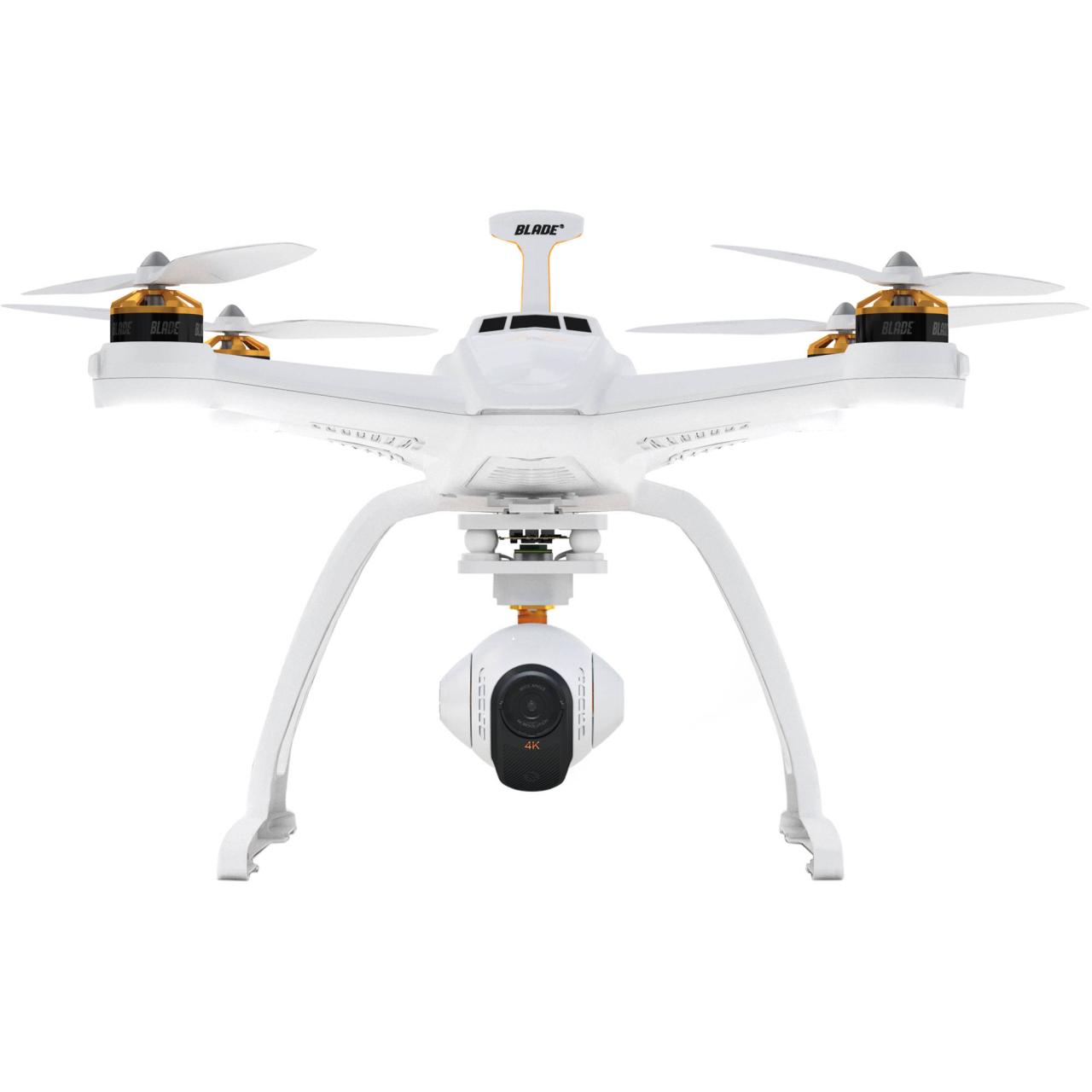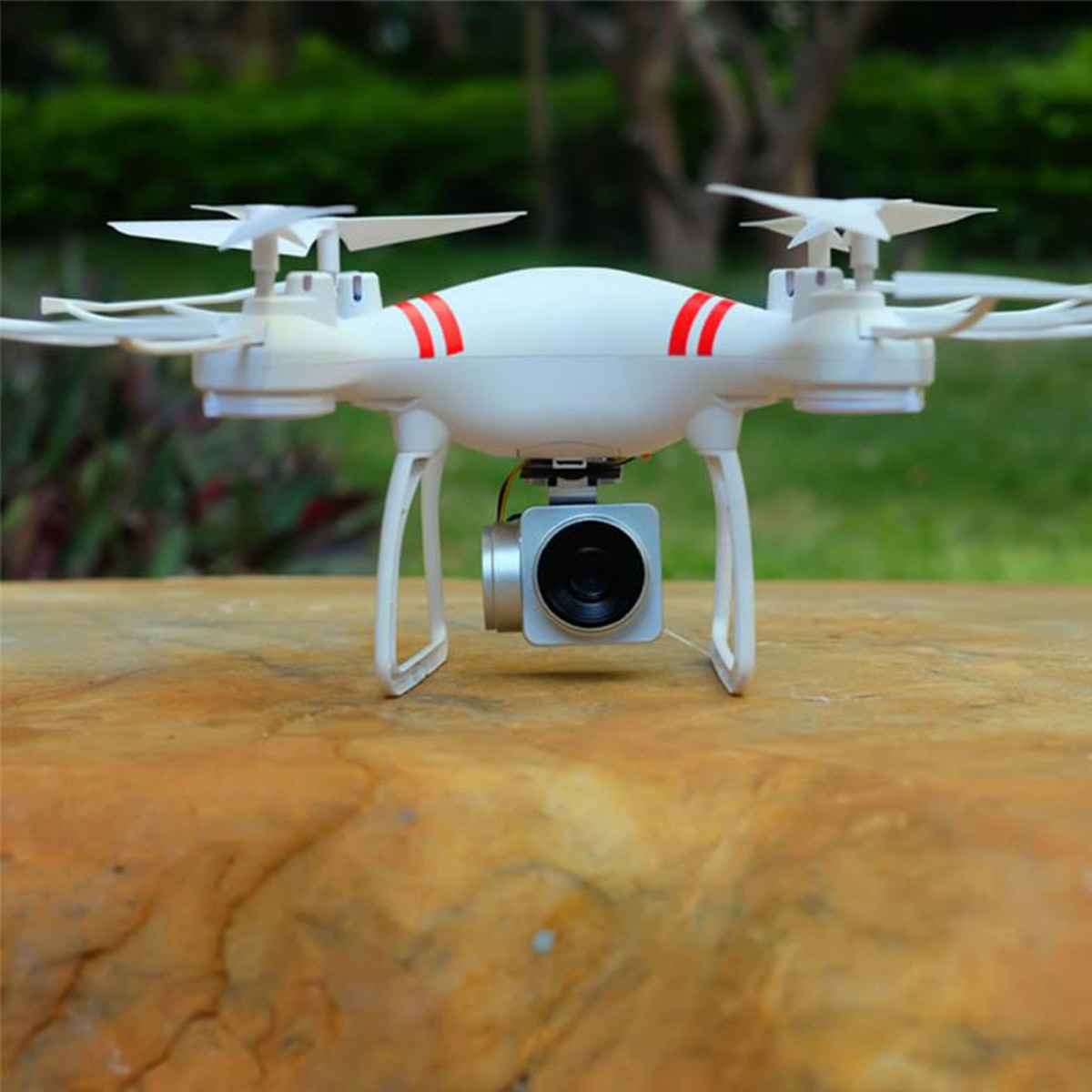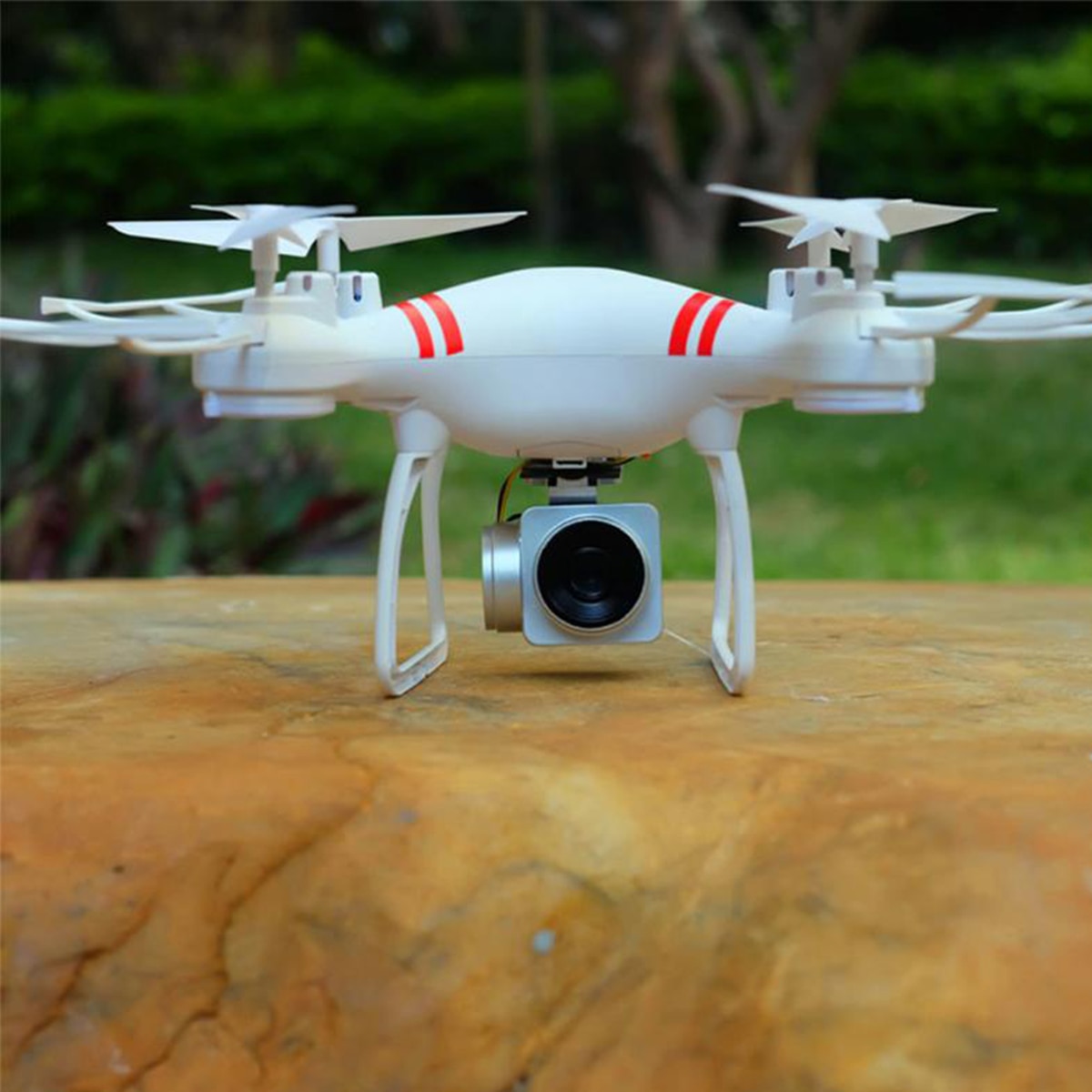Drone with camera technology has revolutionized various sectors, from filmmaking and real estate to agriculture and search and rescue. This versatile technology offers unparalleled perspectives and capabilities, enabling high-resolution imagery and video capture from previously inaccessible locations. Understanding the diverse types of drones, their camera specifications, and the legal considerations surrounding their operation is crucial for both hobbyists and professionals alike.
This guide explores the key aspects of drone with camera technology, providing a comprehensive overview for informed decision-making.
From the smallest nano drones to larger, high-end models, the range of options available is vast. This guide will delve into the intricacies of camera features, flight capabilities, and the various applications driving the growth of this exciting technology. We’ll examine the differences between camera sensors, discuss advanced flight modes, and explore the legal and safety regulations governing drone operation.
By the end, you’ll possess a strong understanding of how to select, operate, and utilize a drone with camera effectively and responsibly.
Types of Drones with Cameras: Drone With Camera
Drones equipped with cameras offer a versatile platform for aerial photography and videography, spanning various sizes, capabilities, and applications. Understanding the different types available is crucial for selecting the right drone for a specific need. This section categorizes drones based on size, flight time, and camera features, highlighting the advantages and disadvantages of each type and comparing different camera sensor technologies.
Drone Types Categorized
| Type | Size | Flight Time (Approximate) | Camera Features |
|---|---|---|---|
| Nano Drone | Very small, palm-sized | 5-10 minutes | Low-resolution camera, limited stabilization, no zoom |
| Micro Drone | Small, easily portable | 10-20 minutes | Improved resolution, basic stabilization, possible digital zoom |
| Mini Drone | Compact, foldable design common | 20-30 minutes | Higher resolution, 3-axis gimbal stabilization, optical zoom sometimes available |
| Standard Drone | Larger, more robust | 30-45 minutes | High-resolution camera, advanced stabilization, optical and digital zoom options, potentially interchangeable lenses |
| Large Drone | Substantial size, often professional grade | 45+ minutes | Very high-resolution camera, professional-grade stabilization, advanced zoom capabilities, interchangeable lenses, often capable of carrying heavier payloads |
Advantages and Disadvantages of Drone Types
The choice of drone type depends heavily on the intended use and budget. Nano and micro drones are ideal for casual use and indoor flights due to their portability and ease of use, but their flight time and camera capabilities are limited. Mini and standard drones offer a balance between portability, flight time, and camera quality, suitable for many hobbyist and professional applications.
Large drones, with their extended flight times and advanced camera systems, are best suited for professional tasks requiring high-quality footage and longer operational periods.
CMOS vs. CCD Camera Sensors
Drone cameras utilize either CMOS (Complementary Metal-Oxide-Semiconductor) or CCD (Charge-Coupled Device) image sensors. CMOS sensors are generally more energy-efficient and produce less noise at higher ISO settings, making them a popular choice for drones. CCD sensors, while offering potentially better image quality in specific conditions, are less energy-efficient and more susceptible to noise. The difference in image quality is often subtle for casual users, but professional users might notice a difference in dynamic range and low-light performance.
Camera Features and Specifications

Understanding drone camera specifications is crucial for capturing high-quality images and videos. This section details key camera features and their impact on image and video capture, along with a comparison of popular drone camera specifications.
Key Camera Features
- Resolution: Measured in megapixels (MP), indicating the image detail. Higher resolution allows for larger prints and more detailed crops.
- Field of View (FOV): Determines the angle of view captured by the camera. Wide-angle lenses capture a broader area, while narrow FOV lenses provide magnification.
- Sensor Size: A larger sensor generally captures more light, resulting in better low-light performance and dynamic range.
- Aperture: Controls the amount of light entering the camera. A wider aperture (smaller f-number) allows for better low-light performance and shallower depth of field.
- ISO Range: Indicates the camera’s sensitivity to light. Higher ISO settings allow for shooting in darker conditions, but can introduce noise.
Impact of Lens Types
Wide-angle lenses are ideal for capturing expansive landscapes and architectural shots, while telephoto lenses allow for closer views of distant subjects. The choice of lens significantly affects the perspective and composition of the image or video.
Comparison of Popular Drone Camera Specifications

| Camera | Resolution | Sensor Size | Aperture | ISO Range |
|---|---|---|---|---|
| Example Camera A | 20 MP | 1/2.3″ | f/2.8 | 100-3200 |
| Example Camera B | 48 MP | 1/1.7″ | f/2.0 | 100-6400 |
| Example Camera C | 12 MP | 1/2″ | f/2.4 | 100-1600 |
Drone Flight Capabilities and Control
Advanced flight modes and various control methods significantly enhance the drone’s capabilities for capturing specific shots. This section explores these features and demonstrates the process of setting up a drone for autonomous flight.
Advanced Flight Modes
Advanced flight modes like Point of Interest (POI), Follow Me, and Waypoints enable autonomous flight patterns, simplifying complex shots. POI allows the drone to orbit a selected point, Follow Me keeps the drone following a moving subject, and Waypoints allows for pre-programmed flight paths. These modes significantly improve camera operation by allowing for hands-free operation and creative shot composition.
Control Methods
Drones can be controlled using a dedicated remote controller or a mobile application. Remote controllers offer precise control and better range, while mobile apps provide user-friendly interfaces and convenient features. The choice of control method depends on user preference and the complexity of the flight operation.
Setting up Autonomous Flight
Setting up a drone for autonomous flight typically involves planning the flight path using the drone’s software, setting camera parameters (resolution, frame rate, etc.), and initiating the flight. For aerial panoramas, the drone will automatically capture a series of overlapping images that are then stitched together. For time-lapses, the drone will capture images at set intervals, creating a time-compressed video sequence.
Drones equipped with cameras offer a versatile platform for various applications, from aerial photography to surveillance. The capabilities of these devices are constantly evolving, as seen with the development of more sophisticated models, such as the shahed drone , which highlights advancements in both technology and strategic deployment. Ultimately, the future of drone-based camera technology promises even greater precision and functionality for both commercial and military uses.
The specific process varies depending on the drone model and software.
Applications of Drones with Cameras
Drones with cameras find widespread use across various industries, offering unique perspectives and efficiencies. This section highlights some key applications and the specific camera features required for each.
Drone Applications Across Industries
| Industry | Application | Drone Type | Camera Features Needed |
|---|---|---|---|
| Real Estate | Property photography and videography | Mini or Standard | High resolution, wide-angle lens, good stabilization |
| Agriculture | Crop monitoring, irrigation management | Standard or Large | High-resolution camera with multispectral or thermal imaging capabilities |
| Filmmaking | Aerial cinematography | Standard or Large | High-resolution camera, advanced stabilization, cinema-grade features |
| Search and Rescue | Aerial surveillance, locating missing persons | Standard or Large | High-resolution camera with zoom capabilities, thermal imaging capabilities |
| Infrastructure Inspection | Power line inspection, bridge assessment | Standard or Large | High-resolution zoom camera, potentially thermal imaging |
Example: Power Line Inspection

A drone equipped with a high-resolution zoom camera with optical stabilization is used to inspect a power line. The drone autonomously flies along the power line, capturing detailed images of the conductors, insulators, and supporting structures. The camera’s zoom capabilities allow for close-up inspection of potential damage or defects, which are then reviewed by inspectors on the ground. The high-resolution images provide clear evidence of any issues, enabling timely maintenance and preventing potential power outages.
Legal and Safety Considerations
Operating drones with cameras requires adherence to legal regulations and safety guidelines to ensure responsible and safe operation. This section Artikels key legal and safety considerations for drone operation.
Legal Regulations and Safety Guidelines
- Registration: Many countries require drone registration before operation.
- Airspace Restrictions: Drone flights are often restricted near airports, military bases, and other sensitive areas.
- Privacy Concerns: Drone operators must respect the privacy of individuals and avoid unauthorized surveillance.
- Operating Limits: There are often limits on flight altitude, distance from the operator, and flight time.
- Insurance: Drone insurance is often required to cover potential damages or injuries.
Responsible Drone Operation
Responsible drone operation includes understanding and adhering to all local regulations, maintaining awareness of surroundings, and operating the drone safely and responsibly. Misuse can lead to accidents, property damage, and legal repercussions. Prioritizing safety and respecting regulations are crucial for responsible drone operation.
Best Practices for Safe and Legal Drone Operation, Drone with camera
- Check weather conditions before flight.
- Keep the drone within visual line of sight.
- Avoid flying over crowds or populated areas.
- Respect privacy and avoid filming individuals without their consent.
- Familiarize yourself with local airspace regulations.
The integration of cameras into drone technology has opened up a world of possibilities, impacting numerous industries and transforming how we capture and utilize aerial imagery. From detailed inspections to breathtaking cinematic shots, drones with cameras are proving their versatility and value across various applications. However, responsible and legal operation remains paramount. By understanding the diverse features, capabilities, and regulations surrounding these devices, individuals and organizations can harness the power of drone technology while adhering to safety guidelines and ethical considerations.
This comprehensive exploration of drone with camera technology provides a strong foundation for informed and responsible usage.
Answers to Common Questions
What is the difference between CMOS and CCD sensors in drone cameras?
CMOS (Complementary Metal-Oxide-Semiconductor) sensors are more common in drones due to their lower power consumption and cost-effectiveness. CCD (Charge-Coupled Device) sensors generally offer better image quality, particularly in low-light conditions, but are more expensive and consume more power.
How long does a drone battery typically last?
Drone battery life varies greatly depending on the drone size, model, and flight conditions. Expect flight times ranging from 15 minutes for smaller drones to over 40 minutes for larger models. Always check the manufacturer’s specifications.
What are the legal requirements for flying a drone?
Drone regulations vary significantly by country and region. Before flying, research and comply with all local laws and regulations, including registration requirements, airspace restrictions, and operational guidelines. Check with your local aviation authority for specific rules.
Drones equipped with cameras offer incredible aerial photography capabilities, expanding creative horizons for both professionals and hobbyists. However, the increasing popularity also highlights safety concerns, as evidenced by recent incidents like those detailed in this report on drone crashes in New Jersey. Understanding the causes of these crashes is crucial for responsible drone operation and ensuring the continued safe use of these versatile camera-equipped devices.
Ultimately, safe operation is key to maximizing the benefits of drone technology.
How do I choose the right drone for my needs?
Consider your budget, intended use (photography, videography, inspection, etc.), desired flight time, and camera features (resolution, zoom, stabilization). Research different models and compare their specifications to find the best fit.
